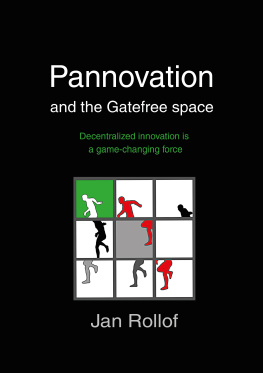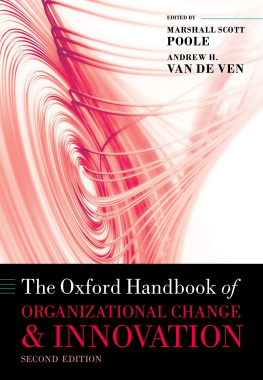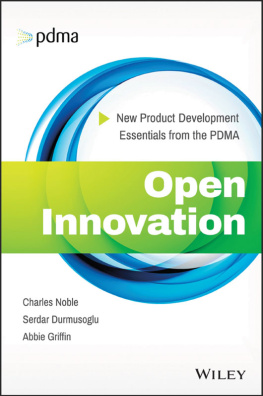Preface
The story behind this book
An invitation to speak at a TEDx event catalyzed the writing of this book. I had worked with the pannovation concept for some time, and it became the natural choice for my talk. The talk was to be no longer than 18 minutes, which forced me to focus on key messages an interesting challenge, and quite different to elaborating on a topic in a book. After the presentation, I decided to put another book project (to do with creativity, innovation, and related topics) on hold and focus on pannovation.
The reason was a distinct feeling of urgency. I use the term pannovation as a name for new and alternative formats of innovation, characterized by autonomy. Today this phenomenon is most noticeable in de-centralized and distributed settings but its impact reaches far beyond such contexts. Pannovation is markedly different to conventional development models, and in my opinion the extent and power of this phenomenon is not fully recognized, which is not surprising since standard metrics of innovation do not capture the significance of ongoing mechanisms. And when awareness of what is happening and the ability to understand its potential are low then the motivation to change is also low.
And there is indeed a need for change in many quarters, hence my feeling of urgency. I am convinced that decentralized and distributed innovation based on autonomy will continue to grow in strength and diversity. Key elements and mechanisms are already at work, particularly outside of the traditional incumbents of innovation. As a result, formal organizations (both private companies and public institutions) need to pay close attention to the evolving innovation landscape and consider the implications of recent and ongoing changes. Those that manage to rethink innovation will gain an important advantage; those that cant will struggle.
A few words about my background may shed some light on my approach to innovation. I have worked in the public sector, private industry, and academia, providing ample opportunity to study innovation and creativity in practice. Many years in these fields has fueled a keen interest in new ideas and phenomena. Writing a number of books on these topics, doing research, and giving talks have broadened my view on what innovation is, and can be. The rich literature on innovation, entrepreneurship, creativity, and psychology has been invaluable, and the Internet an amazing source of data, knowledge, and opinions.
Finally: my background as physician has most likely contributed to my perception of pannovation as an organic system.
Numerous discussions with friends and people in various networks have been priceless. In particular, I am indebted to my friend Bengt Johansson this book is the result of collaboration between us. I was very pleased when he came on board, since it made the work with the book much more stimulating. We have taken long walks in wind and rain, snow and sleet, and also in fine sunny weather while discussing innovation and related matters. Bengt has helped by asking probing questions second nature after many years working as a medical writer, and a nice way to make us think and rethink. I am truly grateful for his professional support and encouragement throughout this project.
Thanks also to Jonna Skacke and Henrik Plsson for giving valuable comments on the manuscript. I also thank Samuel West for inviting me to talk at a TEDx event.
8
Strengths of the outfield
Autonomy allows people to drive coordinate projects based on their own decisions. People can explore ideas without the filters and constraints that typically apply in formal organizations (such as the need to use existing assets and capabilities, and approval only of initiatives that aim at profit). Autonomy to set goals and direction, and choose means and methods translates into diversity and flexibility. Being able to choose not to seek intellectual property rights protection is also an important aspect of autonomy.
Further strengths of the outfield are:
Topical approach allowing many people with different perspectives and backgrounds to engage in a single issue or project, for a time, and with the intensity and at the time that they choose
Flexibility endeavors can shift while under way, in terms of objectives, formats, and means used
Origin in real-world contexts relevance to actual usage is natural, and focus is on functionality
Usefulness as primary objective profit is not an obligatory goal
No pre-conceived limitation to certain solu -tions openness to genuinely new possibilities
Possibility to address every type of challenge including those that the infield finds too small, big, complex, or ambiguous
Common characteristics of outfield initiatives | Common characteristics of infield initiatives |
Non-proprietary | Proprietary (ownership of intellectual property rights, methods, assets etc) |
Low-cost setting: inexpensive means and solutions | High cost setting (invest-ments in proprietary assets, staff, organizational costs) |
Not restricted to using only certain tools and means | Existing assets and capabilities to be used as first-hand alternative |
Usefulness primary aim: different solutions appre-ciated, no final version | Profit primary aim, often based on end-product production (final version) |
Open-ended experiments, with the objective to explore different outcomes | Experiments typically controlled and designed to be confirmative |
Topical initiatives | Projects should fit into longer-term strategic plans |
Possible to share and exchange knowledge freely | Confidentiality due to intellectual property rights issues and competitiveness |
Combinations, fusions, and cross-boundary solutions are attractive | Single-line projects, with alignment to strategic plans |
Informal collaboration and co-creation possible | Collaborations regulated by formal contracts and agreements |
Variation seen as positive and original outcomes valuable | Ambitions to limit variation by standardization |
Customization of work formats and modes | Work structured according to centrally defined plans |
Iterative, explorative, unlinear endeavors | Linear, sequential, gated, controlled, and managed innovation processes |
The comparison above summarizes a number of factors that reflect important advantages of the outfield setting. Some aspects will be hard for traditional infield parties to compete with. A recurring theme is directness: the ability to start, change, test, and select, in terms of time, choices, and decisions. This directness is not dissimilar to play: experimenting and testing because one wants to, for the personal interest and pleasure it provides (even when serious and hard work, and sustained effort and dedication are needed). When playing, the notion of failure becomes irrelevant. Exploring and trying are valuable in their own right; there are just many possibilities. Some dont work out and become lessons learned, stimulating new attempts. Just trying things out gains appreciation in com-munities with common interests; the same applies to sharing experiences and insights gained. Consider the contrast: need for approval to start; control exercised by experts and committees; and points for formal evaluation of preliminary results far from a direct and flexible process.






